
News overview
All news at a glance.
-
 Cracks in the foundations of cosmology
Cracks in the foundations of cosmologyThe measurements no longer fit the theory: Scientists at LMU have made significant progress toward finding out whether these discrepancies can be cleared up, or whether they are rooted in more fundamental problems.
-
Pattern formation of protein pattern interfaces
LMU physicists have developed a model to describe how reaction-diffusion networks develop “foams”.
-
Delayed supply of building blocks facilitates assembly
LMU physicists demonstrate how waiting can increase the efficiency of the self-assembly of complex systems.
-
 Making collective phenomena visible
Making collective phenomena visibleResearchers at LMU and the MCQST Cluster of Excellence are developing methods for the direct observation of novel many-body systems.
-
 Lukas Homeier Receives the Theodor Hänsch PhD Award 2024
Lukas Homeier Receives the Theodor Hänsch PhD Award 2024Outstanding contributions to the application and development of analog quantum simulators
-
Immanuel Bloch and Ralf Jungmann among the most successful "Highly Cited Researchers" by Clarivate
The current international publication analysis counts 17 LMU scientists among the most successful in their field.
-
ERC Synergy Grants for Tim Liedl and Fabian Hoffmann
Funding per project consists of up to 14 million euros for a period of up to 6 years.
-
Discovering the future
A hundred years have passed since the principles of quantum mechanics were formulated. LMU’s Faculty of Physics has organized a Day of Quantum Physics, where it will be showcasing novel quantum technologies and developments.
-
 How to calculate with individual atoms
How to calculate with individual atomsLMU quantum physicist Johannes Zeiher discusses the idea of using individual atoms for quantum computing and how “planqc” was founded to explore it. This start-up has now received the German Entrepreneur Award.
-
-
 Peter Hommelhoff receives Otto Hahn Prize 2025
Peter Hommelhoff receives Otto Hahn Prize 2025The quantum physicist is being recognized for his pioneering contributions to the ultrafast control of electrons.
-
 Born of fire and ice
Born of fire and iceBarbara Ercolano studies how stars and planets can come into being and if life does inevitably arise as a consequence of the physical principles that govern the universe.
-
-
Resolving the structural basis of therapeutic antibody function in cancer immunotherapy
A new study shows how the single-molecule organization of receptors in a cellular context determines the function of antibodies, opening up new pathways for the development of cancer immunotherapies.
-
 An ultrafast light switch
An ultrafast light switchLMU researchers have developed a method that allows ultrafast control of the interactions between light and a material. This opens up new paths for faster optical computers, quantum communication, and photonic circuits.
-
 Winners of the Nano Innovation Award 2025 Announced
Winners of the Nano Innovation Award 2025 AnnouncedEduard Unterauer, Christoph Gruber, and Gabriel Moya honored for their research with real-world impact.
-
 Membrane or metabolism, which came first?
Membrane or metabolism, which came first?LMU researchers have demonstrated a possible mechanism for metabolic processes without cell membranes in water-filled pores.
-
 A question of resonance
A question of resonanceA team led by LMU physicist Andreas Tittl presents a novel method that could make manufacturing processes for semiconductor components easier and cheaper.
-
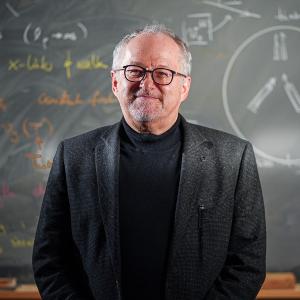 Function of thymus gives rise to form
Function of thymus gives rise to formA model developed by LMU biophysicists demonstrates how biological processes form the convoluted internal architecture of the thymus – allowing for better suppression of autoimmune responses.
-

-
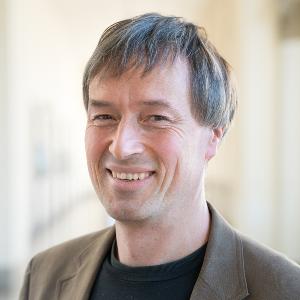 Amino acids as catalysts in the emergence of RNA
Amino acids as catalysts in the emergence of RNAAmino acids helped build RNA at the dawn of life, a new study shows.
-
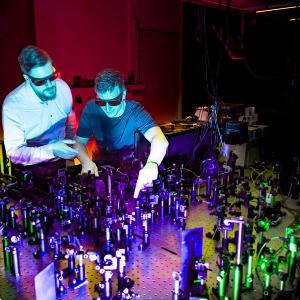 A more efficient way of coupling light and matter
A more efficient way of coupling light and matterLMU researchers are developing ultrathin optical components made of atomically layered systems, which capture light much better than previous materials. This could pave the way for considerably smaller and more efficient photonic components in the future.
-
 New insights into magic-angle graphene
New insights into magic-angle grapheneA team led by LMU physicist Dmitri Efetov has shown that two graphene layers twisted at an angle to each other behave like heavy-fermion metals. This opens up possibilities for the development of new applications.
-
Stability through protein reservoirs
Biophysicists figure out how bacteria form robust patterns despite changing environmental conditions and fluctuating protein concentrations.
-
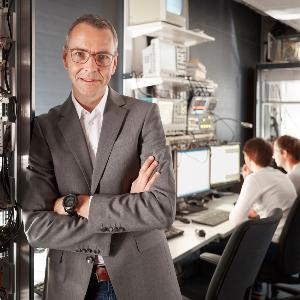 Immanuel Bloch is elected member of the US National Academy of Sciences
Immanuel Bloch is elected member of the US National Academy of SciencesPhysicist Immanuel Bloch, a pioneer in quantum research, has been inducted as an International Member by the American National Academy of Sciences.
-
 DNA origami boosts sensitivity of rapid tests
DNA origami boosts sensitivity of rapid testsAn LMU team has developed a technology that can amplify the signals of biomarkers in conventional test strips more than a hundredfold. Now the researchers are commercializing the method.
-
 Shaping cells with light
Shaping cells with lightResearchers use light stimuli to shape cells and develop a model that explains the mechanisms – with implications for synthetic biology.
-
 Encryption in space
Encryption in spaceBona-fide pioneering: a team of LMU quantum physicists is using a nanosatellite to test new technology for hack-proof quantum cryptography. Read about the early days of a trailblazing mission.
-
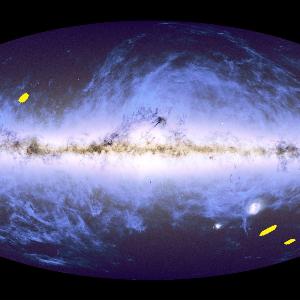 A discovery engine
A discovery engineEuclid opens its data treasure trove and offers glimpse of deep fields. LMU scientists play a significant role in unveiling the dark universe.
-
 The Power of Absence
The Power of AbsenceAn international research team explores, how tiny metal vacancies improve solar hydrogen technologies.
-
 Quantum Year 2025: the world seen anew
Quantum Year 2025: the world seen anewAn interview with Ulrich Schollwöck, Dean of the Faculty of Physics at LMU and member of MCQST.
-
Like pearls on a string
An international team led by LMU and ORIGINS researchers has now discovered a surprisingly narrow and straight filament of eight galaxies and detected huge dark gas clouds in it.
-
 The magic of the collective
The magic of the collectiveQuantum physicist Milan Allan plans to build novel microscopes at LMU to investigate highly promising, and sometimes mysterious, quantum materials.
-
 Roaring in the universe
Roaring in the universeRecord: An international team has measured extreme storms racing at supersonic speeds around the equator of an exoplanet.
-
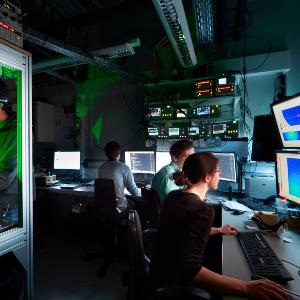 First signs of stripe formation
First signs of stripe formationIn a cold-atom Fermi Hubbard model, researchers observed correlations between hole dopants and indications of stripes that are associated with superconductivity, opening up novel insights into the behaviour of exotic quantum phases.
-
 Efficient energy transport through covalent organic frameworks
Efficient energy transport through covalent organic frameworksAn interdisciplinary study conducted within the e-conversion Cluster of Excellence demonstrates the huge potential of the crystalline semiconducting structures.
-
Immanuel Bloch among Highly Cited Researchers
Publication analysis reveals 18 LMU researchers as among the most successful in their field.
-
ERC Synergy Grants for Dieter Braun and Kevin Heng
Three LMU researchers working in international collaborations have been awarded prestigious Synergy Grants by the European Research Council.
-
 Euclid's deep insights
Euclid's deep insightsESA space mission publishes the first part of a giant map of the universe
-
Origin of life: A new scenario for replication
LMU researchers find a plausible geological setting that may have sparked life on Earth.
-
-
 A magic twist
A magic twistA group led by LMU physicist Dmitri Efetov has successfully detected single photons in the infrared range
-
ERC Starting Grant for Jad C. Halimeh
Dr. Jad C. Halimeh, MCQST member and group leader at LMU München and the Max Planck Institute of Quantum Optics, has won a Starting Grant from the European Research Council (ERC).
-
 AI shines a new light on exoplanets
AI shines a new light on exoplanetsA team led by LMU researchers models the atmospheres of distant planets using neural networks
-
ERC Starting Grant for Markus Dierigl
Six talented early-career researchers of LMU have obtained prestigious starting grants from the European Research Council.
-
 From filament pick-up sticks to active foams
From filament pick-up sticks to active foamsLMU physicists have developed a new model that describes how filaments assemble into active foams.
-
-
Doping a Quantum Magnet
An MCQST team involving LMU researchers has developed a scheme to implement doped, bosonic quantum magnets in tweezer arrays of Rydberg atoms or in cold, polar molecules
-
 The light from distant worlds
The light from distant worldsIs there alien life out there? Astrophysicist Kevin Heng analyzes the tiniest of signatures from the atmosphere of exoplanets to answer one of the biggest questions that exists.
-
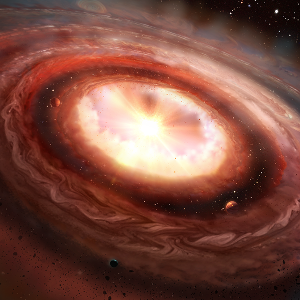 Key to rapid planet formation
Key to rapid planet formationResearchers at LMU, the ORIGINS Excellence Cluster, and the Max Planck Institute for Solar System Research (MPS) have developed a new model to explain the formation of giant planets.
-
 One drop of blood, many diagnoses: Infrared spectroscopy for screening health
One drop of blood, many diagnoses: Infrared spectroscopy for screening healthUsing infrared light and machine learning, researchers have developed a method to effectively screen human health and its deviations at a population level.
-
 Podcast featuring Monika Aidelsburger and Fabian Grusdt
Podcast featuring Monika Aidelsburger and Fabian GrusdtIn the podcast "Exzellent Erklärt", LMU physicists Monika Aidelsburger and Fabian Grusdt talk about their motivation to search for new discoveries.
-
 Crystals as superlenses: The catcher of light
Crystals as superlenses: The catcher of lightEmiliano Cortés develops novel, clever materials to generate sustainable energy and replace fossil sources like oil and gas.
-
 Cosmic wrestling match
Cosmic wrestling matchAn LMU team has furnished a model for revealing what the color of a galaxy tells about its distance, to be used for measuring cosmic structures.
-
Filaments and the formation of stars
Doctoral award for Dr. Elena Hoemann
-
Special exhibition ‘Light and Matter’ at the Deutsches Museum
The new special exhibition ‘Light and Matter’ at the Deutsches Museum makes quantum physics tangible, the Cluster of Excellence MCQST is part of the exhibition.
-
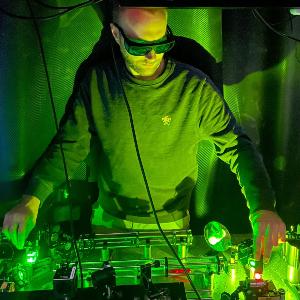 Watching energy materials as they form
Watching energy materials as they formEyes glued to a live transmission from inside a reaction vessel, LMU researchers watch chemical reactions at work. Their results will improve the manufacture of the next generation of energy materials.
-
 A glance at edge modes
A glance at edge modesAn international team from LMU and the Max-Planck Institute for Quantum Optics now observed and manipulated the peculiar states emerging at topological boundaries.
-
 Web-like structures, rogue planets, and the light from lonely stars
Web-like structures, rogue planets, and the light from lonely starsSearching for dark energy: the Euclid space telescope supplies astonishingly detailed cosmic views
-
 Diamond glitter: a play of colors with artificial DNA crystals
Diamond glitter: a play of colors with artificial DNA crystalsUsing DNA origami, LMU researchers have built a diamond lattice with a periodicity of hundreds of nanometers – a new approach for manufacturing semiconductors for visible light.
-
 Testing how well biomarkers work
Testing how well biomarkers workLMU researchers have developed a method to determine how reliably target proteins can be labeled using super-resolution fluorescence microscopy.
-
Video: Interview with Professor Erwin Frey
Physicist Erwin Frey researches the question, what is minimum for life.
-
How do brown dwarfs form?
New observations provide insights into whether the birth of the giant planets takes a similar course to that of stars.
-
Self-assembly of complex systems: hexagonal building blocks are better
Physicists at LMU Munich show that the shape of components is a major determinant of how quickly and efficiently complex structures self-assemble.
-
 Heat flows the secret to order in prebiotic molecular kitchen
Heat flows the secret to order in prebiotic molecular kitchenLMU biophysicists have demonstrated how heat flows through rock fissures could have created the conditions for the emergence of life.
-
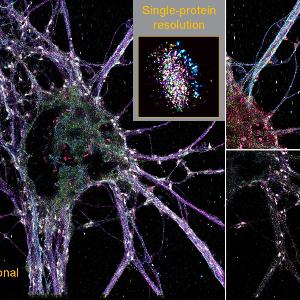 New synapse type discovered by spatial proteomics
New synapse type discovered by spatial proteomicsResearchers led by Ralf Jungmann have developed a super-resolution imaging method (SUM-PAINT) to map protein distributions in neurons and discovered a new type of synapse.
-
 Natural recycling at the origin of life
Natural recycling at the origin of lifeA new study shows how the chemical properties of RNA molecules could have facilitated the emergence of complex life.
-
High-performance environment
LMU student Ralf Konietzka on his way to Harvard
-
Weak polar vortex makes weather more predictable
Events in the stratosphere are making long-range weather in Northern Europe easier to forecast, researchers at LMU have discovered.
-
 Groundbreaking study reveals secrets of planet formation
Groundbreaking study reveals secrets of planet formationA team of astronomers, including physicists from LMU, has gained new insights into the process of planet formation.
-
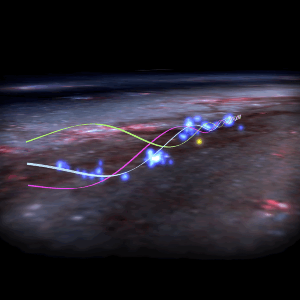 The Radcliffe wave is moving
The Radcliffe wave is movingA huge gaseous structure situated in our local neighborhood of the Milky Way, the Radcliffe wave does in fact curve wavelike around the galactic plain while drifting slowly away from the center of the galaxy.
-
 On the trail of great mysteries
On the trail of great mysteriesSurvey of the X-ray sky by the eRosita telescope confirms predictions of the cosmological standard model with high precision and provides clues to the mass of the mysterious neutrinos.
-
 First tetratomic supermolecules realised
First tetratomic supermolecules realisedA team led by physicist Immanuel Bloch has produced tetratomic supermolecules for the first time.
-
 Revolutionary image of the X-ray sky
Revolutionary image of the X-ray skyThe data from the first eROSITA sky survey are now available.
-
New ERC grants for the Faculty of Physics
Four researchers have been awarded European Research Council (ERC) funding, among them two physicists.
-
Quantum Physics for All
GALaQSci uses augmented reality and artificial intelligence to playfully render the quantum world accessible.
-
 Leibniz Prize for LMU researcher Dmitri Efetov
Leibniz Prize for LMU researcher Dmitri EfetovLMU physicist Dmitri Efetov obtains premier research award in Germany for his work on graphene.
-
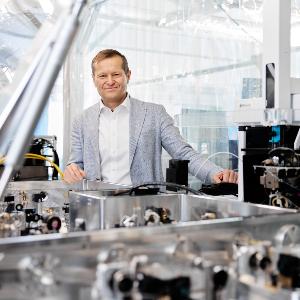
-
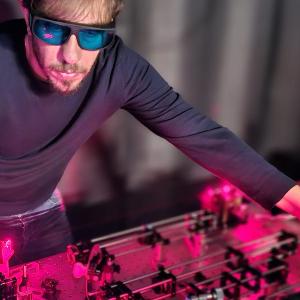 Harvesting more solar energy with supercrystals
Harvesting more solar energy with supercrystalsHydrogen is a building block for the energy transition. To obtain it with the help of solar energy, LMU researchers have developed new high-performance nanostructures. The material holds a world record for green hydrogen production with sunlight.
-
DFG funding for LMU physicist
Dr. Jad C. Halimeh was awarded 1.5 million euros in research funding through the German Research Council (DFG) Emmy Noether program.
-
Origins of life: new CRC at LMU
The German Research Foundation is funding a new Collaborative Research Centre on the origins of molecular evolution.
-
 Til Birnstiel receives ERC Consolidator Grant
Til Birnstiel receives ERC Consolidator GrantThrough Consolidator Grants, the European Research Council (ERC) helps excellent scientists expand and consolidate their innovative research.
-
Three LMU physicists make Highly Cited Researchers list
The latest analysis of publications places seventeen LMU scientists and academics, including three phycicists, among the most successful in their chosen field.
-
 The light of distant worlds
The light of distant worldsDark Energy: Euclid space telescope delivers first scientific images - Researchers from German research institutes are excited
-

-
 "New Horizons in Physics"-Prize for Til Birnstiel
"New Horizons in Physics"-Prize for Til BirnstielThe LMU astrophysicist has won the award for his modeling of dust traps in protoplanetary disks, solving a long-standing puzzle in planet formation.
-
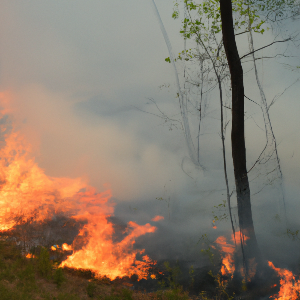 El Niño brings even more heat and extremes
El Niño brings even more heat and extremes"Strong El Niño events can cost tens of thousands of human lives, and the water scarcity in the affected regions affects millions of people."
-
Euclid space telescope catches its first glimpse
With the data the scientists hope to gain insight into the influence of dark matter and dark energy on the structure of the cosmos.
-
 From basic research to application - Nano Innovation Award 2023
From basic research to application - Nano Innovation Award 2023Three young scientists, including a researcher from LMU, were honored with this year's Nano Innovation Award from the Center for NanoScience.
-
 Euclid space telescope successfully launched into space
Euclid space telescope successfully launched into spaceGerman research institutes participating at the forefront of dark matter and dark energy research.
-
 Artificial neurons based on semiconductor technology
Artificial neurons based on semiconductor technologyThe NEHO project is working on ultrafast neural networks, which could be used to develop more efficient methods of information processing in the future.
-
Coupling light and matter
LMU-Researchers have developed a metasurface that enables strong coupling effects between light and transition metal dichalcogenides (TMDCs).
-
In Quantum Simulators
Novel Method for studying U(1) Lattice Gauge Theories with ultracold fermions.
-
 LIGO/Virgo/KAGRA S230615az: Wendelstein observations of DESI galaxies and GIT candidates
LIGO/Virgo/KAGRA S230615az: Wendelstein observations of DESI galaxies and GIT candidatesWith the 3kk imager at the 2m Fraunhofer telescope at Wendelstein Observatory, Germany, we have observed the highest probability candidate host galaxies.
-
Snapshots of photoinjection
Ultrafast laser physicists from the attoworld team at LMU and the Max Planck Institute of Quantum Optics have gained new insights into the dynamics of electrons in solids immediately after photoinjection.
-
 Beyond the limits of light
Beyond the limits of lightThe research team led by LMU physicist Ralf Jungmann is using a new technique to enhance fluorescence microscopy to the Ångstrom scale.
-
 Keeping time with an atomic nucleus
Keeping time with an atomic nucleusNuclear clocks could allow scientists to probe the fundamental forces of the universe in the future. LMU researchers have made a crucial advance in this area as part of an international collaboration.
-
Chiral spin liquids and non-Abelian anyons
New study suggests pathway toward investigating chiral spin liquids.
-
DFG grant for physicist
Space plasma physicist Elena Kronberg has been awarded a DFG research grant through the Heisenberg program.
-
 In search of life in the universe
In search of life in the universeHow do we detect life on exoplanets via astronomy? This is the question being asked by theoretical astrophysicist Kevin Heng.
-

-
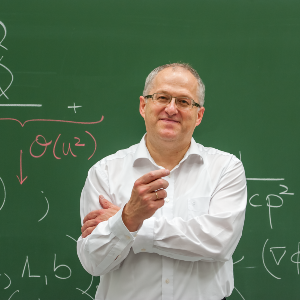 Proteins set vesicles in motion
Proteins set vesicles in motionBiophysicists have designed a new cell-like transport system that represents an important milestone on the road to artificial cells.
-
 On the trail of a mysterious force in space
On the trail of a mysterious force in spaceAn initial study of dark energy with eROSITA X-Ray telescope indicates that it is uniformly distributed in space and time.
-
Two LMU researchers awarded HFSP grants
Dieter Braun and Christof Osman, together with international partners, have each received funding worth around a million euros from the Human Frontier Science Program.
-
 New ERC grant
New ERC grantEarly-career scientist at LMU obtains prestigious Starting Grant from European Research Council for work on metasurfaces.
-
 Second stage for quantum simulation project PASQuanS
Second stage for quantum simulation project PASQuanSThe EU flagship project PASQuanS2 with 25 partners coordinated by Immanuel Bloch, is funded by the European Union.
-
-
 The right twist
The right twistStacked layers of ultrathin semiconductor materials feature phenomena that can be exploited for novel applications.
-
Droplets in motion
LMU physicists investigate the dynamics of active protein droplets in cells.
-
 Life on distant moons
Life on distant moonsFree-floating planets do not orbit a sun. Their moons may still have liquid water, and thus the basis for the emergence of life. Munich-based researchers have now determined the necessary properties.
-
 The Kormendy relation of early-type galaxies as a function of wavelength in Abell S1063, MACS J0416.1-2403, and MACS J1149.5+2223
The Kormendy relation of early-type galaxies as a function of wavelength in Abell S1063, MACS J0416.1-2403, and MACS J1149.5+2223We analyse the Kormendy relations of the three Hubble Frontier Fields clusters, Abell S1063 at z = 0.348, MACS J0416.1-2403 at z = 0.396, and MACS J1149.5+2223 at z = 0.542, as a function of wavelength.
-

-
 MORPHOFIT: Morphological analysis of galaxies
MORPHOFIT: Morphological analysis of galaxiesMORPHOFIT consists of a series of modules for estimating galaxy structural parameters.
-
AI in physics class – teaching and learning with technologies of the future
Professor Jochen Kuhn investigates learning with and about artificial intelligence (AI) in schools and universities. In addition, he researches established digital media and technologies of the future.
-
 Artificial intelligence for rapid simulation of data
Artificial intelligence for rapid simulation of dataNew collaboration on digitalization in basic scientific research
-
 When the invisible was made visible
When the invisible was made visibleWilhelm C. Röntgen died in Munich 100 years ago, on 10 February 1923. We talk to historian of science Kärin Nickelsen about the discoverer of X-rays.
-
 Microwaves direct the interplay of waltzing molecules
Microwaves direct the interplay of waltzing moleculesThe existence of so-called super molecules has long been predicted theoretically. Now, a Munich team of researchers managed for the first time to create the conditions for proving these exotic entities.
-
 New technology to generate green hydrogen
New technology to generate green hydrogenLMU physicist Emiliano Cortés about a novel strategy for the production of chemicals in a cleaner and zero-carbon emission manner
-
 Biological patterns: directed by intracellular flows
Biological patterns: directed by intracellular flowsLMU physicists have shown how fluid flows influence the formation of complex patterns
-
Physicist awarded ERC Grant
The European Research Council has awarded a Proof of Concept Grant to Prof. Alexander Högele
-
 Simulation of superconductivity
Simulation of superconductivityA Munich team of researchers has for the first time monitored in an experiment how positive charge carriers in a solid-state model combined to form pairs. This process could play an important role in understanding high-temperature superconductivity.
-
 KiDS-1000 cosmology: Constraints from density split statistics
KiDS-1000 cosmology: Constraints from density split statisticsThis paper presents a cosmological analysis of the fourth data release of the Kilo Degree Survey based on the density split statistics.
-
 The magic angle
The magic angleLMU physicists have uncovered mysterious properties of twisted trilayer graphene
-
 Breakthrough of the Year 2022
Breakthrough of the Year 2022The Physics World magazine has chosen the recent research of Dr. Marcus Ossiander and Dr. Martin Schultze as one of the top ten breakthroughs of 2022.
-
ORIGINS PhD Awards 2022 for Riccardo Arcodia and Alan Ianeselli
This year, the ORIGINS Cluster PhD awards go to Riccardo Arcodia, Max Planck Institute for Extraterrestrial Physics and Alan Ianeselli, LMU Munich.
-
 More control over plasma accelerators
More control over plasma acceleratorsPhysicists at the Centre for Advanced Laser Applications at LMU Munich have combined two plasma-based methods of particle acceleration for electron beams.
-
 What robotics can learn from amoebae
What robotics can learn from amoebaeLMU researchers have developed a new model to describe how biological or technical systems form complex structures without external guidance.
-
Fifteen LMU scientists and academics make Highly Cited Researchers list
The latest analysis of publications places fifteen LMU scientists and academics among the most successful in their chosen field.
-
 Forgetting visualized in brain cells
Forgetting visualized in brain cellsLMU physicist Paola Coan presents new imaging technique that allows brain cells of mice suffering from Alzheimer's disease to be visualized in previously unattained quality.
-
 ERC Synergy Grant for Georgi Dvali: exploring a new physics
ERC Synergy Grant for Georgi Dvali: exploring a new physicsLMU physicist Georgi Dvali has been awarded the prestigious European Research Council Synergy Grant for a project at the interface of quantum physics and general relativity.
-
 Light-driven molecular swing
Light-driven molecular swingScientists at the LMU and the Max Planck Institute of Quantum Optics have used ultrashort laser pulses to make the atoms of molecules vibrate and have gained a precise understanding of the dynamics of energy transfer that take place in the process.
-
New tools for climate monitoring
Equipped with novel instruments, research flights over Canada are furnishing data about the emission of greenhouse gases. LMU physicists are playing a major role in the surveys.
-
Exploring new worlds
LMU physicist Immanuel Bloch has been named Clarivate Citation Laureate for his pioneering research in the field of quantum simulation.
-
On the path to secure communication
LMU physicists generate secret keys for secure communication.
-
 Precise disorder
Precise disorderThe material graphene and a magic angle: physics with a new twist
-
 Photometric Redshifts for Next-Generation Surveys
Photometric Redshifts for Next-Generation SurveysIn this review, we focus on the greatest common challenges and prospects for improvement in applications of photometric redshifts to the next generation of surveys.
-
 Pumping up the music of molecules
Pumping up the music of moleculesLaser physicists have used an optical resonator to amplify the characteristic vibrations of molecules excited by laser pulses in such a way that their identification becomes possible even at very low concentrations.
-
 Building a bridge from the large to the small
Building a bridge from the large to the smallA new theory enables the simulation of complex pattern formation in biological systems across different spatial and temporal scales.
-
Quantum cryptography: Hacking futile
An international team led by LMU physicist Harald Weinfurter has successfully implemented an advanced form of quantum cryptography for the first time. Encryption is more secure against hacking attempts.
-
 A microwave freezer for molecules
A microwave freezer for moleculesA team led by quantum physicist Immanuel Bloch has developed a new method to cool gases of polar molecules to near absolute zero. This paves the way for studying quantum effects of exotic forms of matter.
-
Dr. Sophia Gruber wins Klartext Award 2022
Science Communication Award to former CeNS Student Representative
-
Photographing a light helix
With their newly developed "nanoTIPTOE" technique, physicists from LMU and the Max Planck Institute of Quantum Optics managed for the first time to record a helical light field on shortest time and length scales.
-
Quantum Physics and Graphene
Physicist Dmitri Efetov Conducts Research into Graphene, a Carbon Material in Two Dimensions.
-
LMU and Marvel Fusion agree on cooperation to research laser-based nuclear fusion
LMU and the Munich start-up Marvel Fusion will be collaborating in the field of laser research.
-
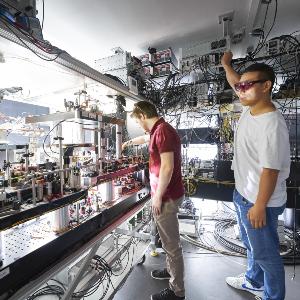 Record entanglement of quantum memories
Record entanglement of quantum memoriesResearchers have entangled two quantum memories over a 33-kilometer-long fiber optic connection – a record and an important step toward the quantum internet.
-
 DNA with a twist and a pinch of salt
DNA with a twist and a pinch of saltA team of biophysicists led by prof. Jan Lipfert has measured how the twist of DNA depends on the concentration and type of ions in its environment.
-
 Controlling the Waveform of Ultrashort Infrared Pulses
Controlling the Waveform of Ultrashort Infrared PulsesAn international team of laser physicists of the attoworld team at LMU and the Max Planck Institute of Quantum Optics has achieved unprecedented control over light pulses in the mid-infrared wavelength range.
-
 Light-Controlled Reactions at the Nanoscale
Light-Controlled Reactions at the NanoscalePhysicists at LMU and the Max Planck Institute of Quantum Optics have used for the first time laser light to control the location of light-induced reactions on the surface of nanoparticles.
-
Next-generation AI: networking beyond disciplinary boundaries
At an AI symposium, eight newly appointed AI professors at LMU presented their research.
-
Better insights into Earth’s interior
LMU geophysicist Max Moorkamp has developed a method that allows us to investigate the composition of the Earth with better results.
-
 A tug-of-war with corona
A tug-of-war with coronaHow stable are the bonds formed by coronaviruses with human cells? Researchers from LMU have designed a new assay to find out – and to investigate drugs made to prevent the virus from binding.
-
 The first stages of DNA evolution
The first stages of DNA evolutionDroplets of dew water on the primordial Earth could have been the first compartments to host the replication of short DNA molecules and their evolution.
-
Climate researchers survey dramatic warming in the Arctic
HALO--(AC)3 field campaign, in which LMU researchers are involved, investigates a worrying phenomenon.
-
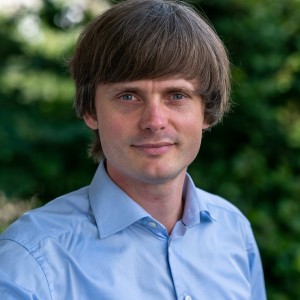 Grant: Understanding skin formation
Grant: Understanding skin formationLMU physicist Friedhelm Serwane together with two international collaborators has been awarded an HFSP grant of one million Euros.
-
 Revealing the conformational landscape of nucleosomes
Revealing the conformational landscape of nucleosomesA team of scientists led by Professor Jan Lipfert have developed a high-throughput pipeline to image nucleosomes using atomic force microscope imaging to reveal the conformational ensemble of nucleosome structures.
-
 The PDF perspective on the tracer-matter connection: Lagrangian bias and non-Poissonian shot noise
The PDF perspective on the tracer-matter connection: Lagrangian bias and non-Poissonian shot noiseWe study the connection of matter density and its tracers from the probability density function (PDF) perspective.
-
 Sensing light
Sensing lightPhysicists of the attoworld-team at Ludwig-Maximilians-Universität have uncovered what happens during the sampling of a light field. This helped them increase the sensitivity of the measurement by up to one order of magnitude.
-
 New insights into the formation of brown dwarfs
New insights into the formation of brown dwarfsA team led by LMU astrophysicist Basmah Riaz has detected a special methane compound outside the solar system for the first time.
-
 Prestigious award for Ferenc Krausz
Prestigious award for Ferenc KrauszProfessor Ferenc Krausz has been awarded the prestigious Wolf Prize in Physics. The Hungarian-Austrian physicist receives the prize for his pioneering contributions to ultrafast laser science and attosecond physics.
-
 The Faculty of Physics awards the "Theodor-Hänsch-Promotionspreis" (Theodor Hänsch PhD Award) 2021 to Dr. Florian Schüder
The Faculty of Physics awards the "Theodor-Hänsch-Promotionspreis" (Theodor Hänsch PhD Award) 2021 to Dr. Florian SchüderDr. Florian Schüder receives the award for his outstanding dissertation entitled "Advancing and applying Next-Generation DNA-based super-resolution microscopy".
-

-
 Work is progressing on the establishment of Munich Quantum Valley
Work is progressing on the establishment of Munich Quantum ValleyPioneering network in quantum science has already commenced work and has now been formally founded as an association.
-
 Early bird
Early birdThe attoworld group reports in a video on the research results to date of the BIRD project.
-
 Dark Energy Survey Year 3 results: Cosmology from cosmic shear and robustness to data calibration
Dark Energy Survey Year 3 results: Cosmology from cosmic shear and robustness to data calibrationThis work, together with its companion paper, Secco, Samuroff et al., present the Dark Energy Survey Year 3 cosmic-shear measurements and cosmological constraints based on an analysis of over 100 million source galaxies.
-
 Self-organization of complex structures: a matter of time
Self-organization of complex structures: a matter of timeLMU researchers have developed a new strategy for manufacturing nanoscale structures in a time- and resource-efficient manner.
-
 Dmitri Efetov: Exotic physics in the second dimension
Dmitri Efetov: Exotic physics in the second dimensionNew appointment at LMU Munich: Professor Dmitri Efetov holds the Chair of Experimental Solid State Physics at the Faculty of Physics
-
Four new ERC grants at LMU
Four talented early-career researchers have obtained prestigious starting grants together with LMU from the European Research Council.
-
 Dark Energy Survey year 3 results: covariance modelling and its impact on parameter estimation and quality of fit
Dark Energy Survey year 3 results: covariance modelling and its impact on parameter estimation and quality of fitWe describe and test the fiducial covariance matrix model for the combined two-point function analysis of the Dark Energy Survey Year 3 (DES-Y3) data set.
-
 A Cold Pair of Mirrors Made Stable
A Cold Pair of Mirrors Made StableA team of scientists from the Ludwig Maximilian University of Munich and attocube systems AG have engineered a Fabry-Pérot cavity at cryogenic temperatures under closed-cycle cooling conditions. The results have been published in PRX Quantum.
-
 The PAU survey: measurement of narrow-band galaxy properties with approximate bayesian computation
The PAU survey: measurement of narrow-band galaxy properties with approximate bayesian computationIn this work, we forward-model the Physics of the Accelerating Universe Survey (PAUS) narrow-band data.
-
 Gas bubbles in rock pores – a nursery for life on Early Earth
Gas bubbles in rock pores – a nursery for life on Early EarthMunich and Dresden based researchers create compelling scenario for the evolution of membraneless microdroplets as the origin of life.
-
 From pixel to universe and back
From pixel to universe and backAstrophysicist Daniel Gruen is using artificial intelligence to explore the cosmos. He accepted a professorship at LMU’s Faculty of Physics in summer 2021.
-
Discovering the origins of life
On the moment when something entirely new emerged from inanimate matter: The CRC “Emergence of Life” and the Deutsches Museum developed the game AEON.
-
 In the nano-aquarium: Infrared super-resolution microscopy of living cells
In the nano-aquarium: Infrared super-resolution microscopy of living cellsPhysicists at LMU have developed a method for visualizing chemical patterns on unstained living cells in the nanometer range.
-
 Make carbonate not carbon dioxide
Make carbonate not carbon dioxideLMU scientists at the Nano-Institute Munich developed a technique to avoid CO2 in energy conversion processes with carbon-containing fuels
-
Quantum optics: New platform for light-matter coupling
LMU physicists Samarth Vadia and Alexander Högele report in PRX Quantum.
-
In his element
LMU Nobel Prize winner Theodor Hänsch turns 80. The physicist talks about his most important discoveries, but also about exploding chemicals, pink laser guns and his encounters with Steve Jobs and Bill Gates.
-
 Monika Aidelsburger receives prestigious research prizes
Monika Aidelsburger receives prestigious research prizesThe LMU physicist has been awarded both the Alfried Krupp Prize and the Klung-Wilhelmy Science Prize.
-
 Structure formation in mini-organs
Structure formation in mini-organsThe development of alveoli in organoids derived from mammary-gland tissue follows the same physical principles as the formation of discrete droplets in a water jet.
-
 Superconductivity: When soap bubbles turn to soup
Superconductivity: When soap bubbles turn to soupWith the help of high-resolution microscopy, Munich based scientists successfully observed the transformation of a metal of magnetic polarons into a normal Fermi liquid.
-
 Modeling the Universe with data
Modeling the Universe with dataSpace and time encoded in 320 million Megabytes: LMU astrophysicist Klaus Dolag uses simulations to study how the cosmos evolved.
-
 Honor for Prof. Emiliano Cortés
Honor for Prof. Emiliano CortésProf. Emiliano Cortes, W2 tenure-track Professor at the Chair of Hybrid Plasmonics at the Faculty of Physics, has been selected for a special issue of "2021 Emerging Scientist".
-
 One-way for thermal radiation
One-way for thermal radiationLMU physicists have developed a novel method for contactless cooling of objects.
-
 X-ray view of nanostructures
X-ray view of nanostructuresStudy reveals formation and self-organisation of materials over multiple length scales
-

-

-

-
-
-
 First ATLAS New Small Wheel nears completion
First ATLAS New Small Wheel nears completionOn 28 May 2021, teams of physicists and engineers installed the final "wedge" of the first ATLAS New Small Wheel detector. This was an important milestone for the Collaboration, in preparation for the wheel’s installation in the ATLAS cavern later this s
-
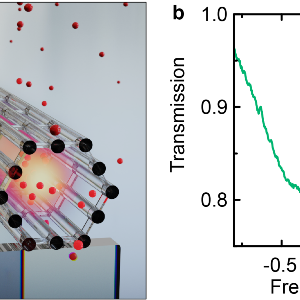 Quantum technologies: Hollow-core light cage on a chip
Quantum technologies: Hollow-core light cage on a chipA German-British research team has developed an on-chip hollow-core light cage that could provide a platform for quantum-storage and quantum-nonlinear applications.
-

-

-
-
-
 The Faculty of Physics awards the "Theodor-Hänsch-Promotionspreis" 2020 to Dr. Isabella Graf
The Faculty of Physics awards the "Theodor-Hänsch-Promotionspreis" 2020 to Dr. Isabella GrafDr. Isabella Graf receives the "Theodor-Hänsch-Promotionspreis" 2020 from the Faculty of Physics for her outstanding dissertation entitled "Principles of self-organization and self-assembly in biologically inspired non-equilibrium systems - a conceptual
-
-

-
 ERC Starting Grant for Dr. Friedhelm Serwane
ERC Starting Grant for Dr. Friedhelm SerwaneWhat role do mechanical forces play in the development of neural networks, such as the human retina? – This question will be tackled by Dr. Friedhelm Serwane and his new ERC funded research group at LMU, starting in September 2020.
-

